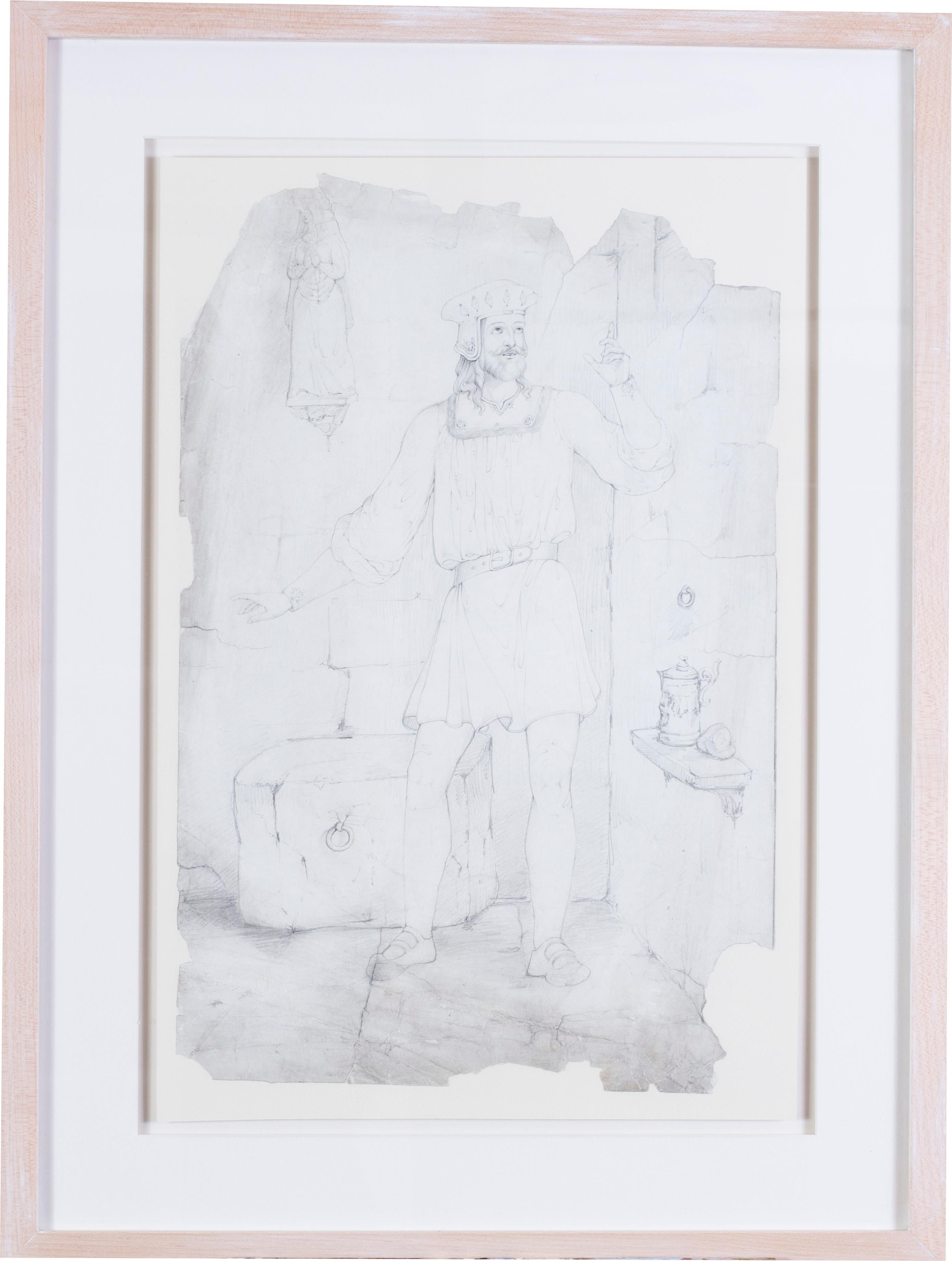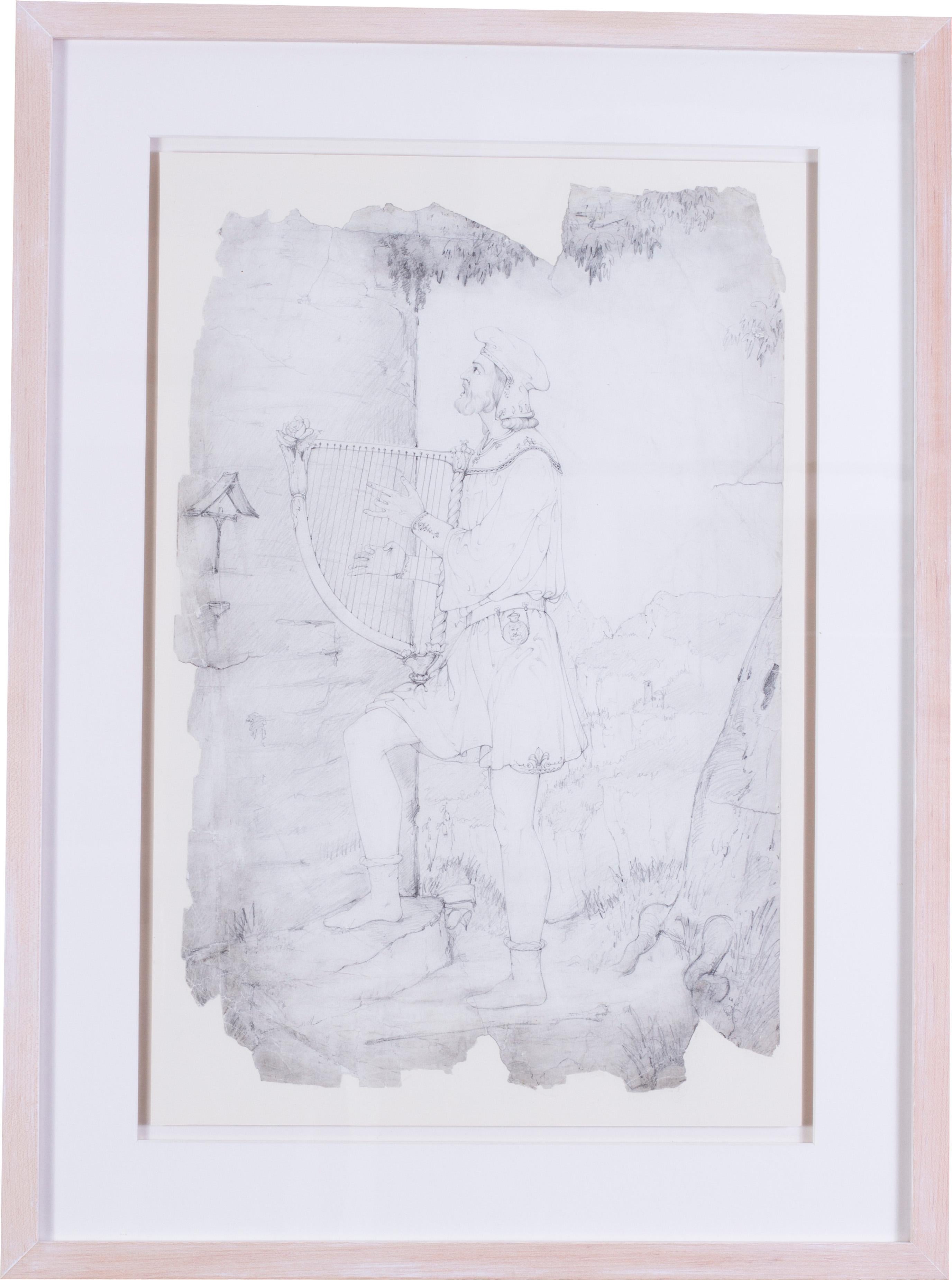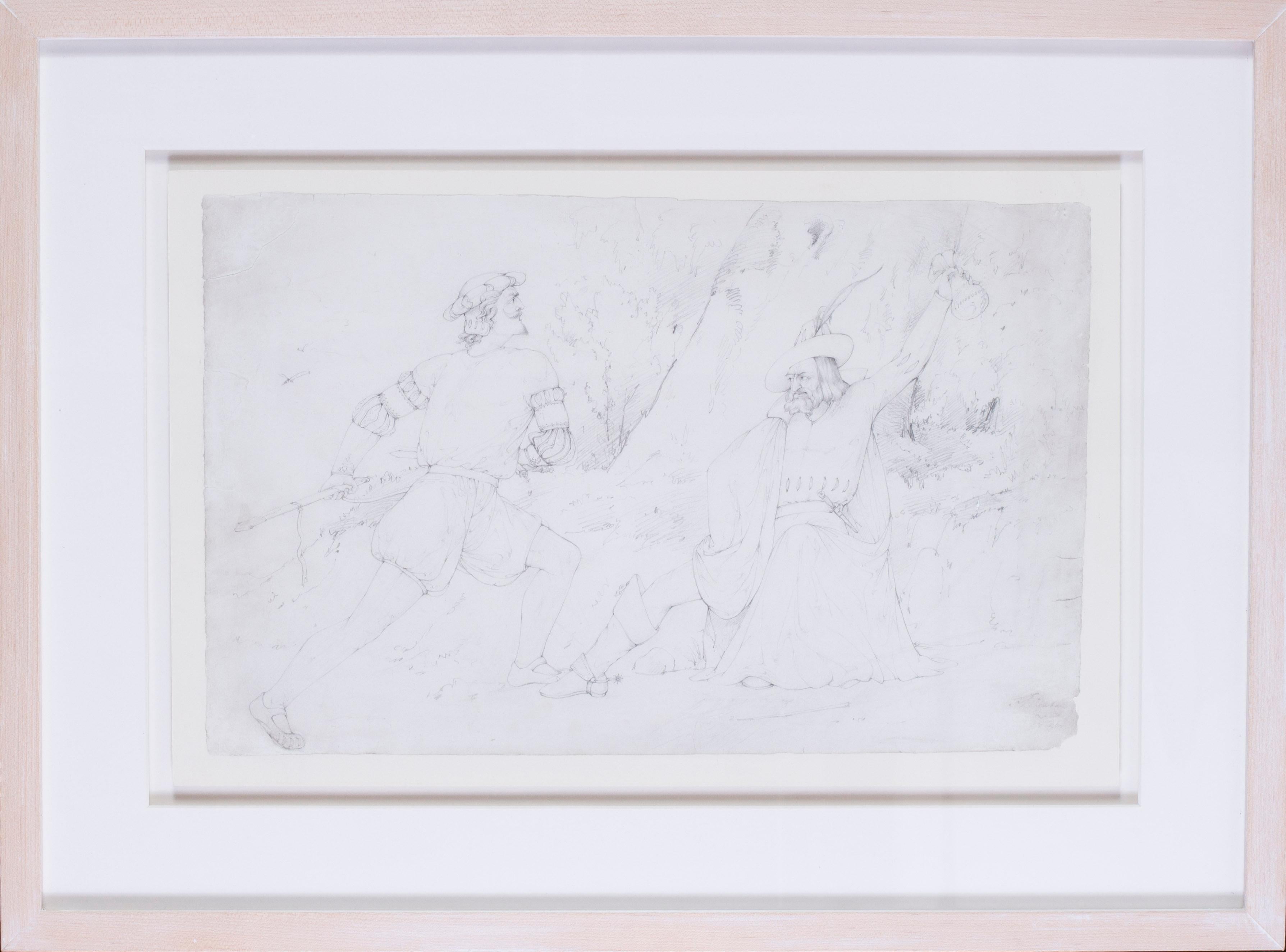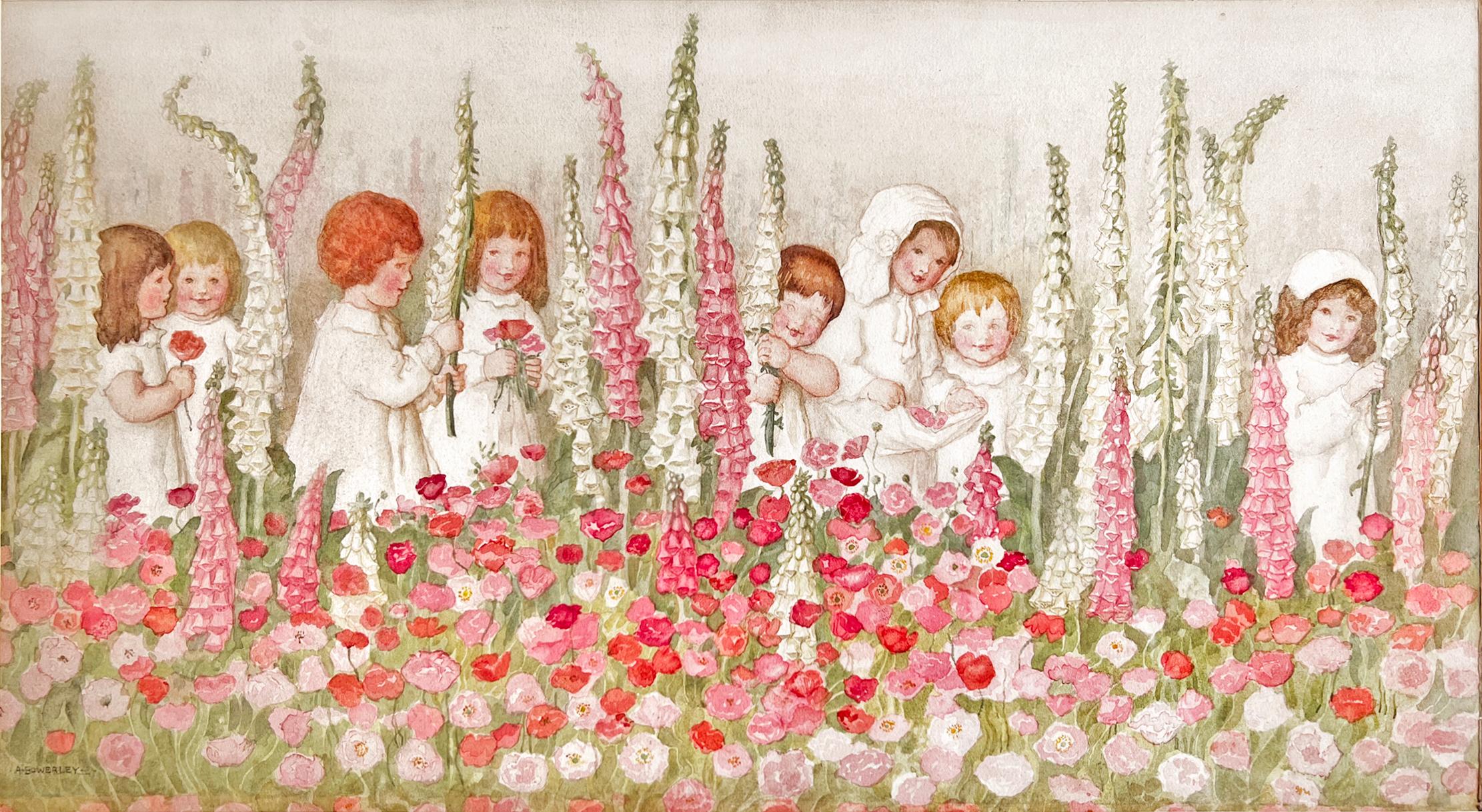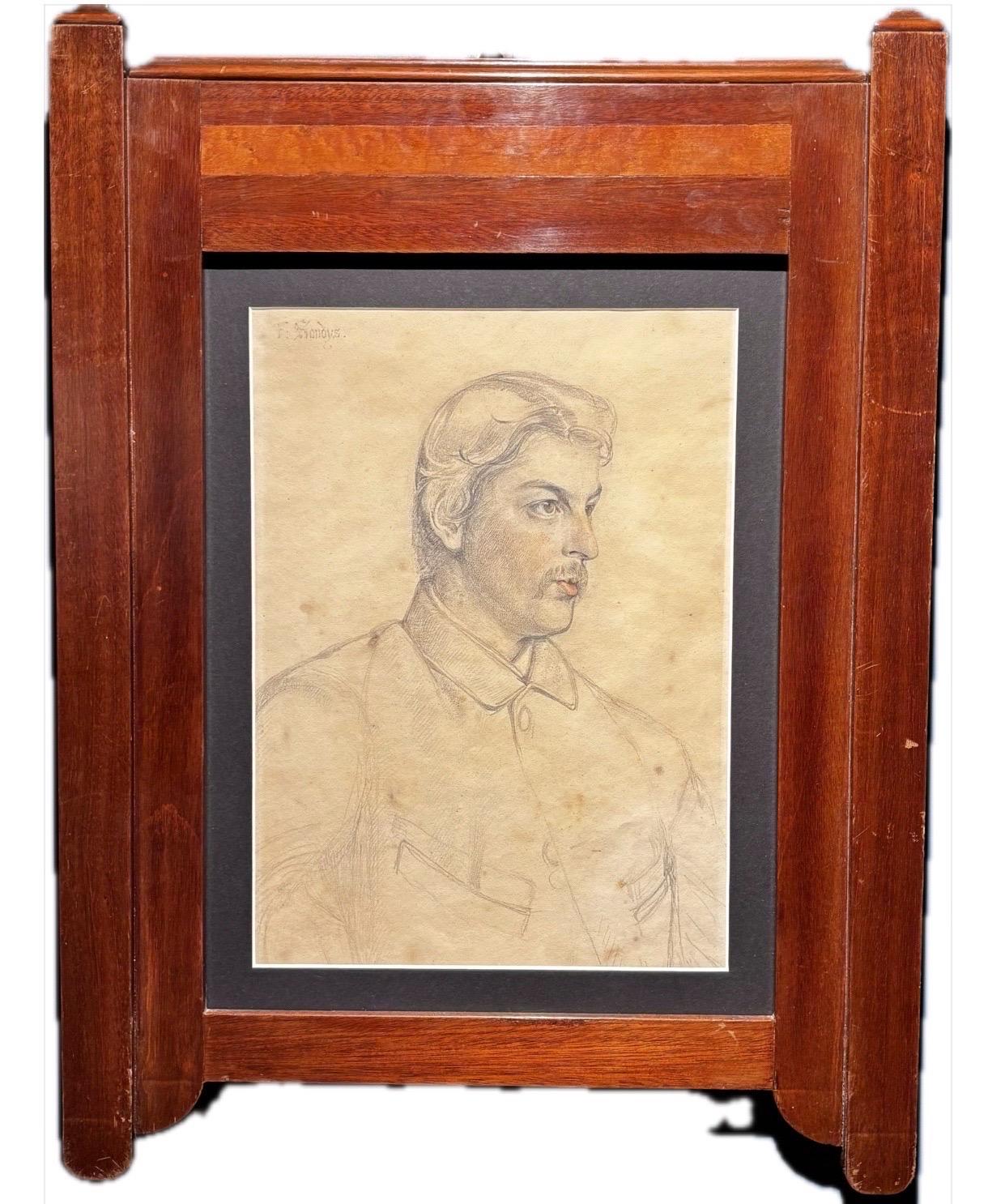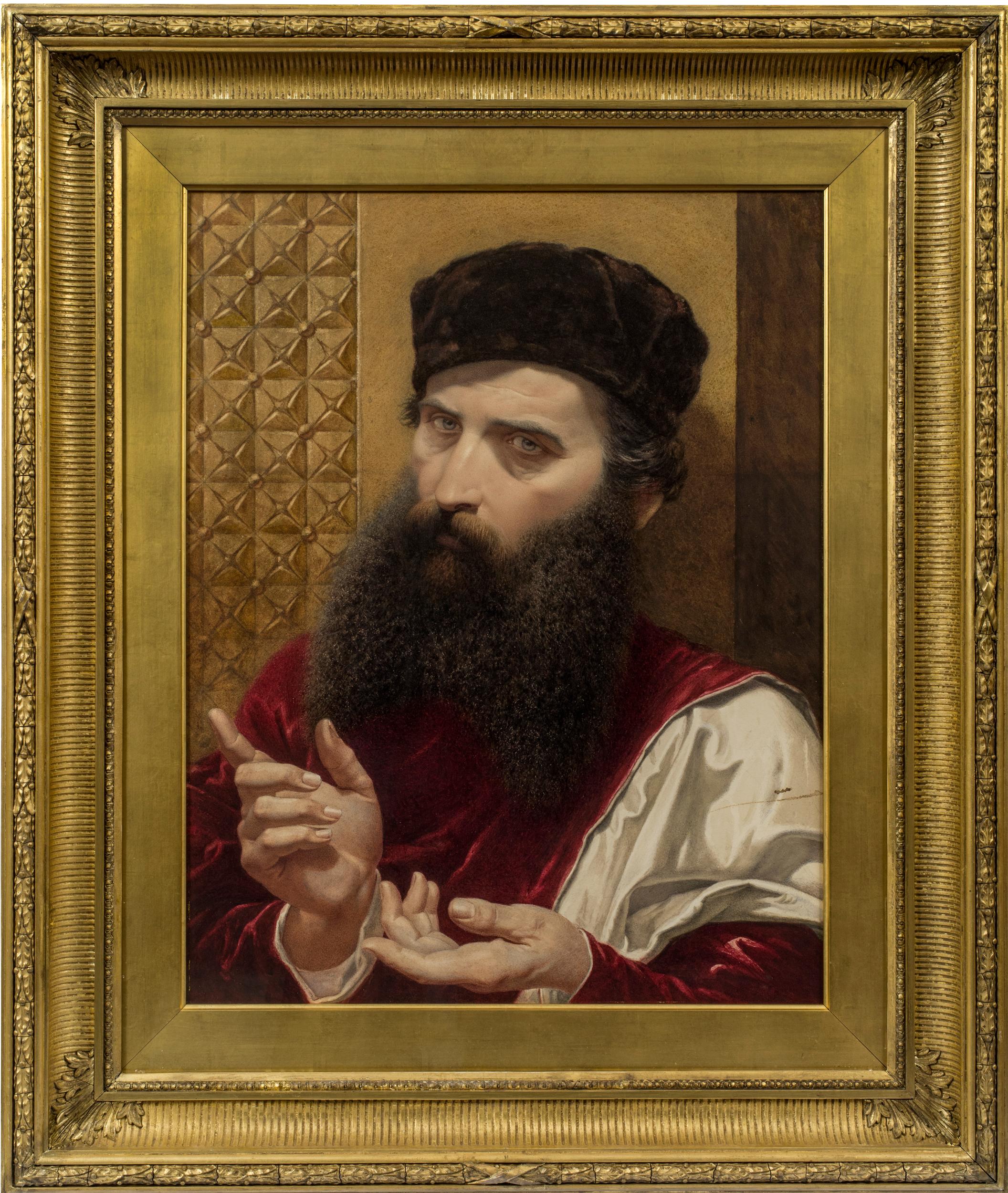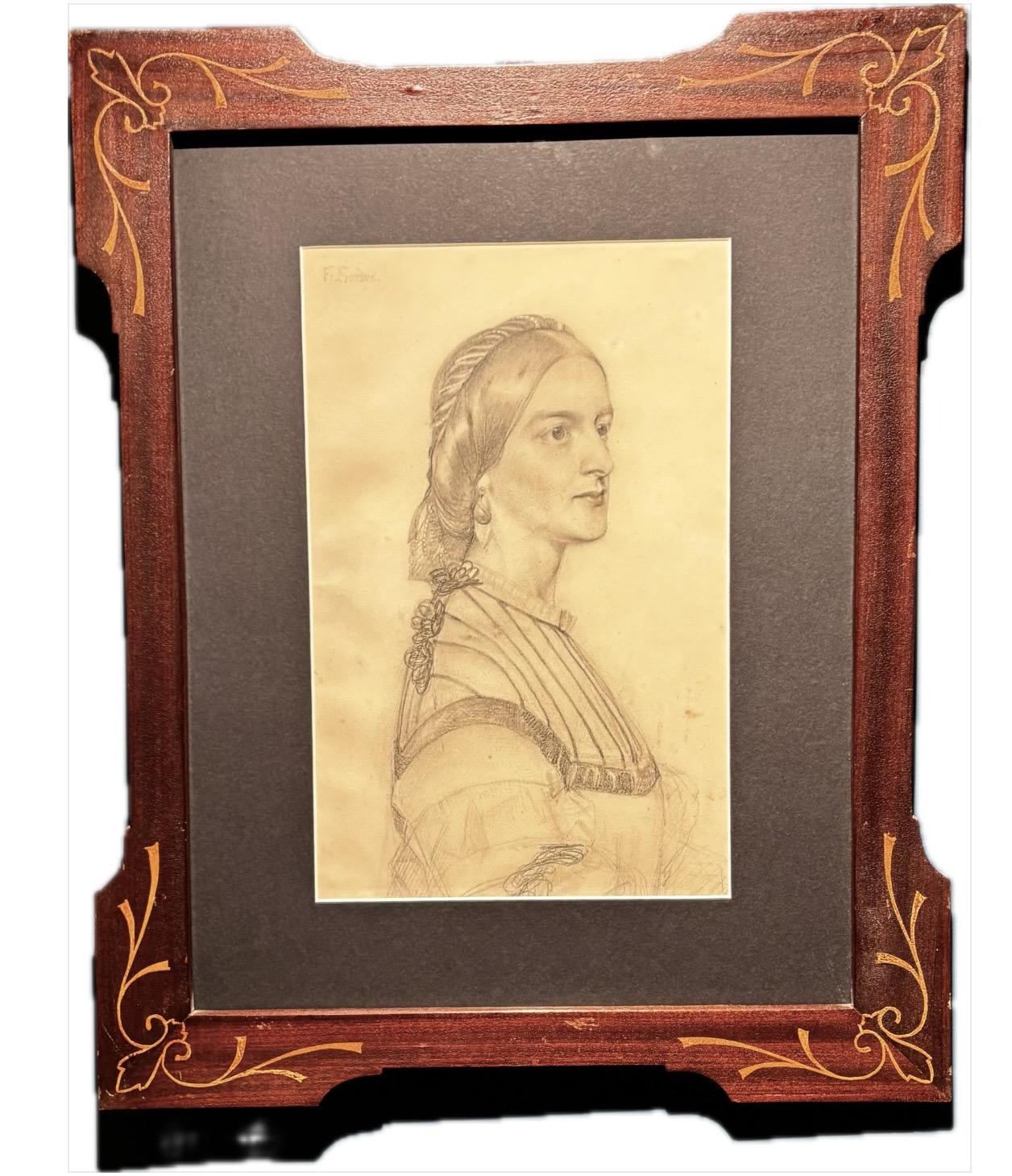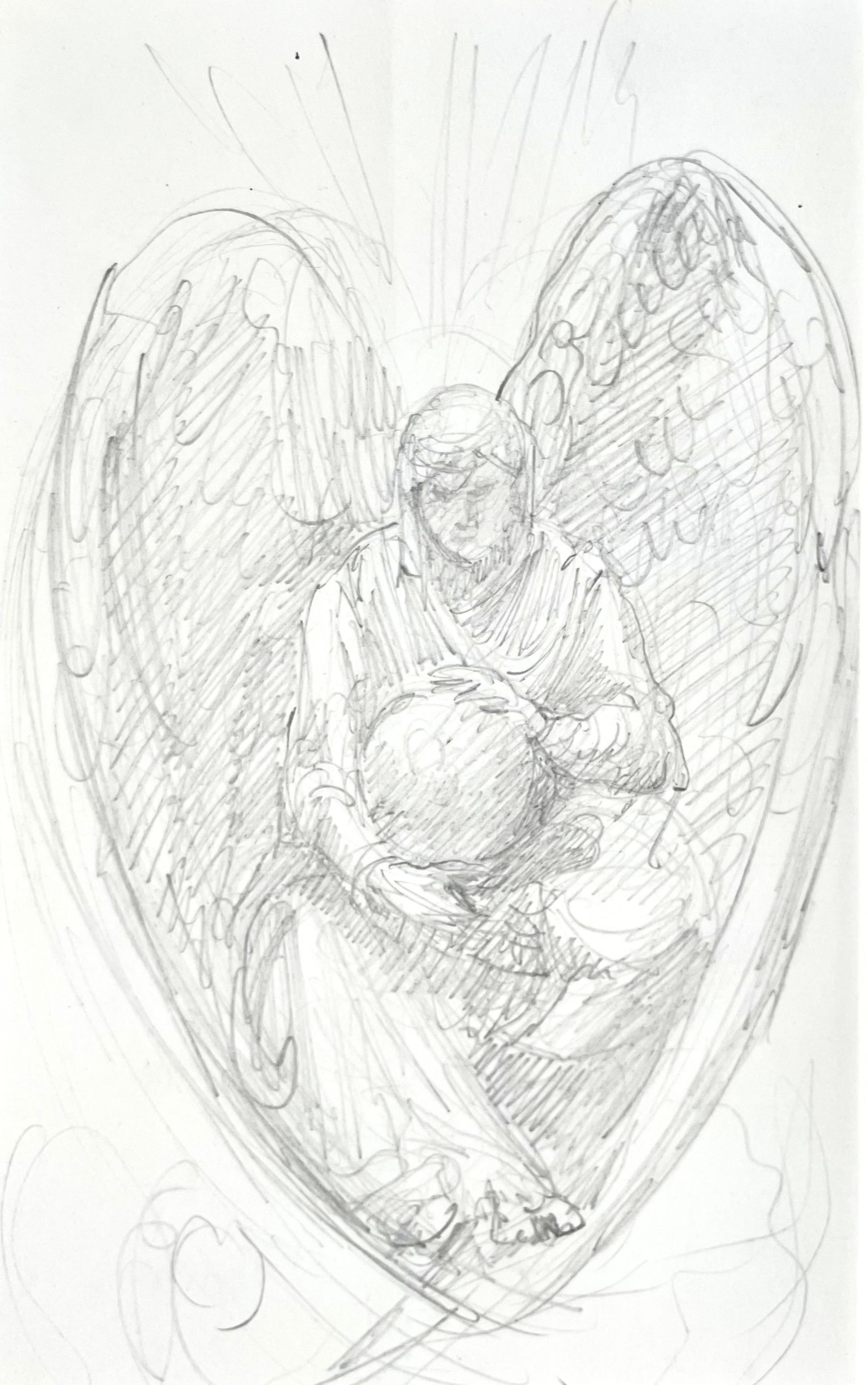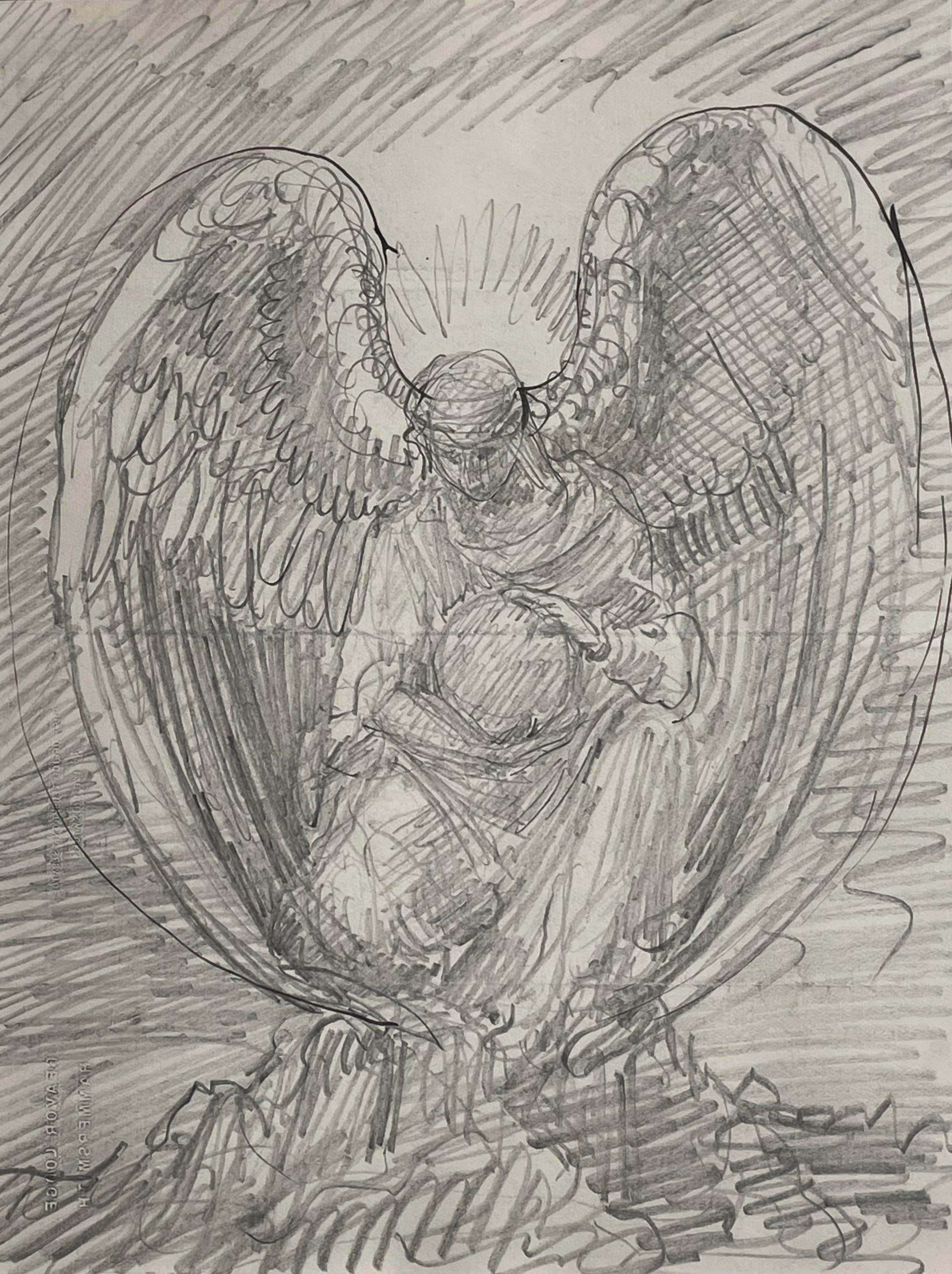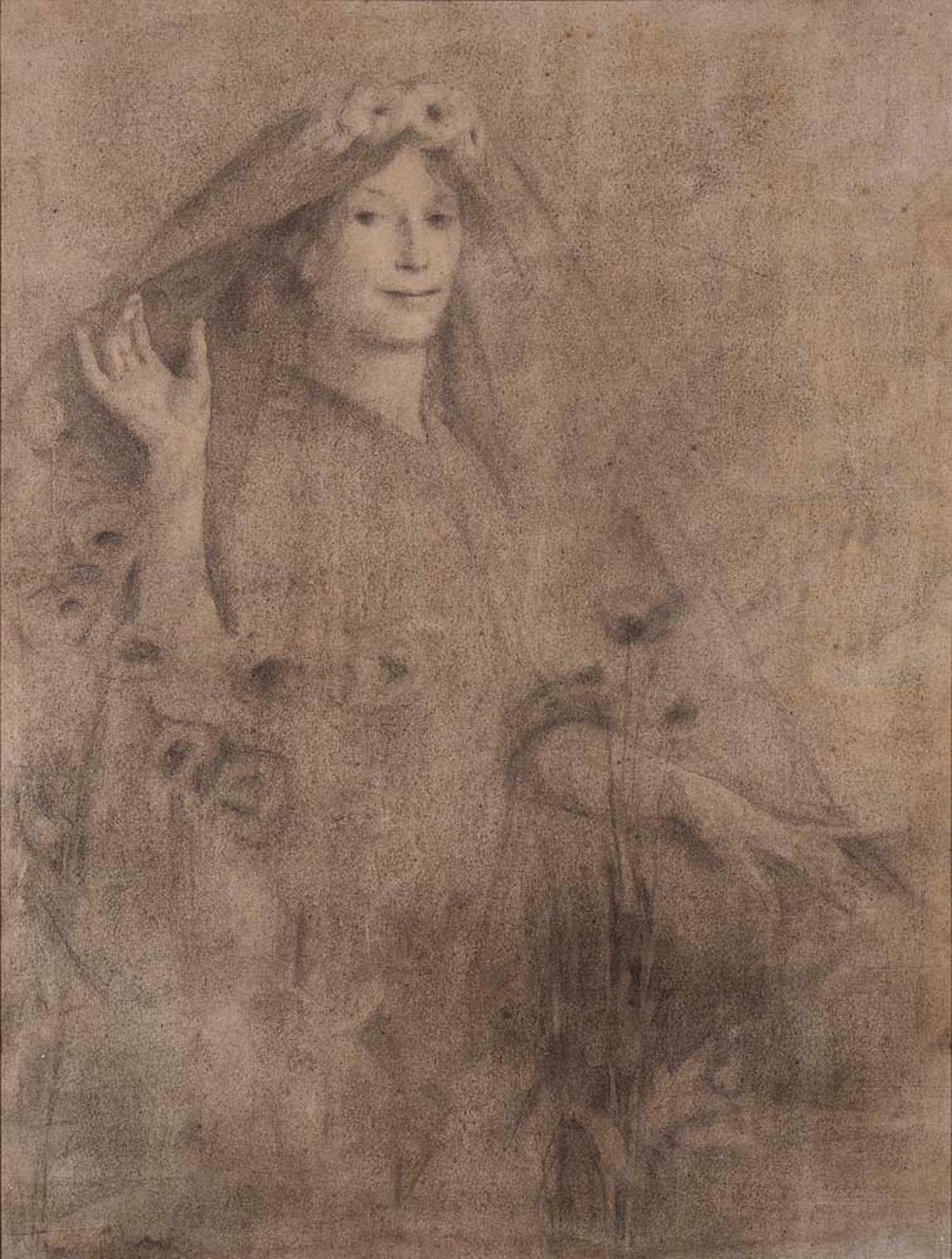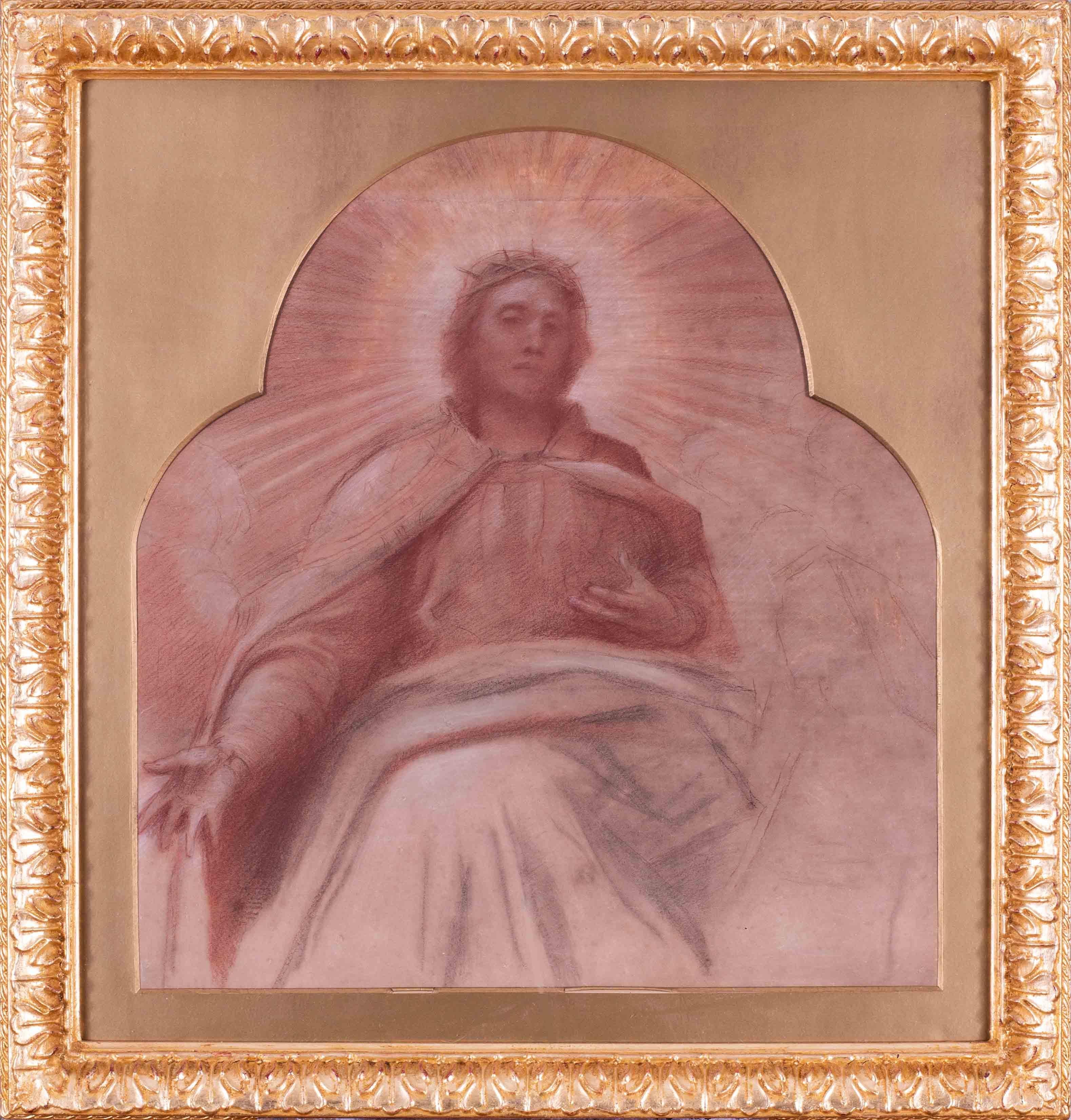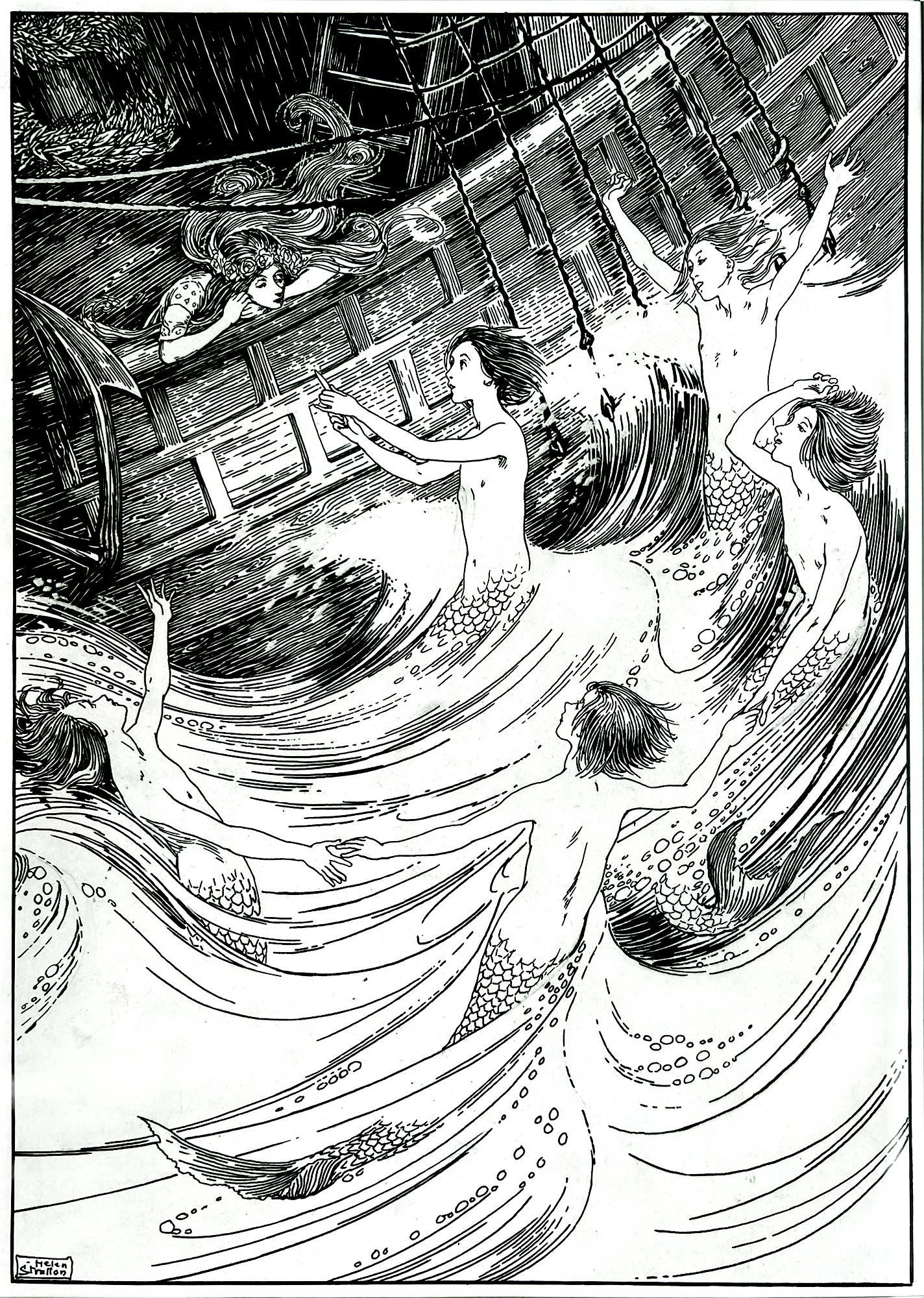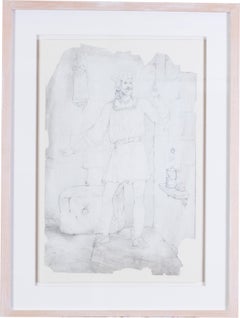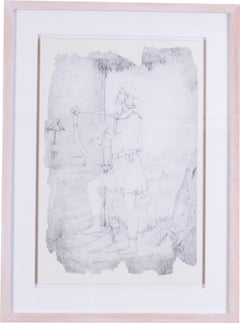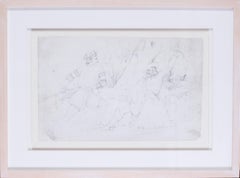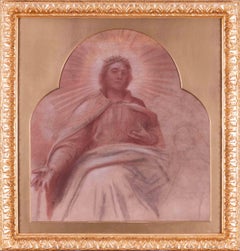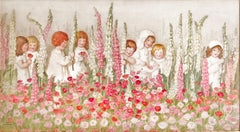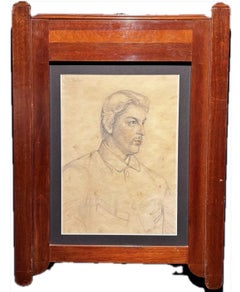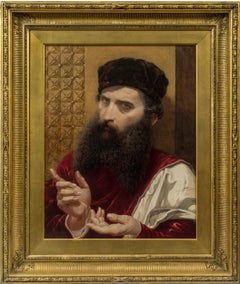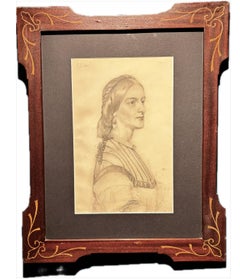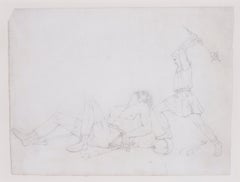
Study of a warrior slaying a sleeping giant
Want more images or videos?
Request additional images or videos from the seller
1 of 8
Frederic LeightonStudy of a warrior slaying a sleeping giant
About the Item
- Creator:Frederic Leighton (1830 - 1896, British)
- Dimensions:Height: 9.5 in (24.13 cm)Width: 12.75 in (32.39 cm)
- Medium:
- Movement & Style:
- Period:
- Condition:In fair condition, please contact the dealer for further information on condition.
- Gallery Location:Petworth, GB
- Reference Number:1stDibs: LU54034211812
About the Seller
4.9
Gold Seller
Premium sellers maintaining a 4.3+ rating and 24-hour response times
Established in 2010
1stDibs seller since 2017
262 sales on 1stDibs
Typical response time: 3 hours
Authenticity Guarantee
In the unlikely event there’s an issue with an item’s authenticity, contact us within 1 year for a full refund. DetailsMoney-Back Guarantee
If your item is not as described, is damaged in transit, or does not arrive, contact us within 7 days for a full refund. Details24-Hour Cancellation
You have a 24-hour grace period in which to reconsider your purchase, with no questions asked.Vetted Professional Sellers
Our world-class sellers must adhere to strict standards for service and quality, maintaining the integrity of our listings.Price-Match Guarantee
If you find that a seller listed the same item for a lower price elsewhere, we’ll match it.Trusted Global Delivery
Our best-in-class carrier network provides specialized shipping options worldwide, including custom delivery.More From This Seller
View AllPre-Raphaelite, early 19th Century drawing by the British artist Lord Leighton
By Frederic Leighton
Located in Petworth, West Sussex
Lord Frederick Leighton (British, 1830-1896)
A Medieval Allegory
pencil on paper
the fragment measures approx. 19.1/2 x 13 in.
(49.5 x 33 cm.)
Provenance: Gifted by Leighton to his cousin Edith Emily Jellicorse, nee Garnham, and thence by descent.
We would like to thank Daniel Robins, the curator at Leighton House for the authenticating this work in full.
Daniel has suggested this study would have been executed when Leighton was studying in Frankfurt
Leighton was born in Scarborough to Augusta Susan and Dr. Frederic Septimus Leighton. He received his artistic training on the European continent, first from Eduard von Steinle and then from Giovanni Costa. According to Daniel Robbins, the curator at Leighton House, This drawing comes from the time Leighton studied under Eduard von Steinle. He then studied at the Accademia di Belle Arti in Florence. From 1855 to 1859 he lived in Paris, where he met Ingres, Delacroix, Corot and Millet. In 1860, he moved to London, where he associated with the Pre-Raphaelites. In 1864 he became an associate of the Royal Academy and in 1878 he became its President (1878–96). American art critic Earl Shinn claimed at the time that "Except Leighton, there is scarce any one capable of putting up a correct frescoed figure in the archway of the Kensington Museum." His paintings represented Britain at the great 1900 Paris Exhibition. Leighton was knighted at Windsor in 1878 and was created a baronet, of Holland Park Road eight years later. He was the first painter to be given a peerage. Leighton remained a bachelor and rumours of him having an illegitimate child with one of his models, in addition to the supposition that Leighton may have been a homosexual, continue to be debated. On his death his barony was extinguished after existing for only a day; this is a record in the Peerage. His house in Holland Park, London has been turned into a museum. It contains many of his drawings and paintings, as well as some of his former art collection including a painting dedicated to Leighton by Sir John Everett Millais. The house also features many of Leighton's inspirations, including his collection of Iznik tiles. Its centrepiece is the magnificent Arab Hall. Leighton was an enthusiastic volunteer soldier, enrolling with the first group to join the 38th Middlesex (Artists') Rifle Volunteer Corps (later to be known as the Artists Rifles...
Category
19th Century Pre-Raphaelite Figurative Drawings and Watercolors
Materials
Paper, Pencil
An early 19th Century drawing by the British pre-Raphaelite artist Lord Leighton
By Frederic Leighton
Located in Petworth, West Sussex
Lord Frederick Leighton (British, 1830-1896)
A very early study of a Medieval Minstrel
pencil on paper
the fragment measures approx. 19.1/2 x 13 in.
(49.5 x 33 cm.)
Provenance: Gifted by Leighton to his cousin Edith Emily Jellicorse, nee Garnham, and thence by descent.
We would like to thank Daniel Robins, the curator at Leighton House for the authenticating this work in full.
Daniel has suggested this study would have been executed when Leighton was studying in Frankfurt
Leighton was born in Scarborough to Augusta Susan and Dr. Frederic Septimus Leighton. He received his artistic training on the European continent, first from Eduard von Steinle and then from Giovanni Costa. According to Daniel Robbins, the curator at Leighton House, This drawing comes from the time Leighton studied under Eduard von Steinle. He then studied at the Accademia di Belle Arti in Florence. From 1855 to 1859 he lived in Paris, where he met Ingres, Delacroix, Corot and Millet.
In 1860, he moved to London, where he associated with the Pre-Raphaelites. In 1864 he became an associate of the Royal Academy and in 1878 he became its President (1878–96). American art critic Earl Shinn claimed at the time that "Except Leighton, there is scarce any one capable of putting up a correct frescoed figure in the archway of the Kensington Museum." His paintings represented Britain at the great 1900 Paris Exhibition.
Leighton was knighted at Windsor in 1878 and was created a baronet, of Holland Park Road eight years later. He was the first painter to be given a peerage.
Leighton remained a bachelor and rumours of him having an illegitimate child with one of his models, in addition to the supposition that Leighton may have been a homosexual, continue to be debated. On his death his barony was extinguished after existing for only a day; this is a record in the Peerage. His house in Holland Park, London has been turned into a museum. It contains many of his drawings and paintings, as well as some of his former art collection including a painting dedicated to Leighton by Sir John Everett Millais. The house also features many of Leighton's inspirations, including his collection of Iznik tiles. Its centrepiece is the magnificent Arab Hall.
Leighton was an enthusiastic volunteer soldier, enrolling with the first group to join the 38th Middlesex (Artists') Rifle Volunteer Corps (later to be known as the Artists Rifles...
Category
19th Century Pre-Raphaelite Figurative Drawings and Watercolors
Materials
Paper, Pencil
Lord Frederick Leighton drawing, British pre-Raphaelite, original
By Frederic Leighton
Located in Petworth, West Sussex
Lord Frederick Leighton (British, 1830-1896)
Apprehending a thief
pencil on paper
the fragment measures approx. 17.1/3 x 11in. (44 x 28cm.)
signed ‘F Leighton’ (lower right)
Provenance: Gifted by Leighton to his cousin Edith Emily Jellicorse, nee Garnham, and thence by descent
We would like to thank Daniel Robins, the curator at Leighton House for the authenticating this work in full.
Daniel has suggested this study would have been executed when Leighton was studying in Frankfurt
Leighton was born in Scarborough to Augusta Susan and Dr. Frederic Septimus Leighton. He received his artistic training on the European continent, first from Eduard von Steinle and then from Giovanni Costa. According to Daniel Robbins, the curator at Leighton House, This drawing comes from the time Leighton studied under Eduard von Steinle. He then studied at the Accademia di Belle Arti in Florence. From 1855 to 1859 he lived in Paris, where he met Ingres, Delacroix, Corot and Millet. In 1860, he moved to London, where he associated with the Pre-Raphaelites. In 1864 he became an associate of the Royal Academy and in 1878 he became its President (1878–96). American art critic Earl Shinn claimed at the time that "Except Leighton, there is scarce any one capable of putting up a correct frescoed figure in the archway of the Kensington Museum." His paintings represented Britain at the great 1900 Paris Exhibition. Leighton was knighted at Windsor in 1878 and was created a baronet, of Holland Park Road eight years later. He was the first painter to be given a peerage. Leighton remained a bachelor and rumours of him having an illegitimate child with one of his models, in addition to the supposition that Leighton may have been a homosexual, continue to be debated. On his death his barony was extinguished after existing for only a day; this is a record in the Peerage. His house in Holland Park, London has been turned into a museum. It contains many of his drawings and paintings, as well as some of his former art collection including a painting dedicated to Leighton by Sir John Everett Millais. The house also features many of Leighton's inspirations, including his collection of Iznik tiles. Its centrepiece is the magnificent Arab Hall. Leighton was an enthusiastic volunteer soldier, enrolling with the first group to join the 38th Middlesex (Artists') Rifle Volunteer Corps (later to be known as the Artists Rifles...
Category
19th Century Pre-Raphaelite Figurative Drawings and Watercolors
Materials
Paper, Pencil
British 19th Century chalk drawing of Christ in Glory by G F Watts
By George Frederic Watts
Located in Petworth, West Sussex
George Frederic Watts (British, 1817-1904)
Christ in Glory
Red chalk in an arched mount
Inscribed verso, including a signed letter verso from R H Jefferies, Curator of The Watts Ga...
Category
19th Century Pre-Raphaelite Figurative Drawings and Watercolors
Materials
Paper, Chalk
British, turn of the century watercolour of an angel by Lexden Lewis Pocock
Located in Petworth, West Sussex
Lexden Lewis Pocock (British, 1850 – 1919)
An angel
Watercolour on paper
Signed ‘Lexden. L. Pockock’ (lower right)
15.1/4 x 6.1/2 in. (38.8 x 16.3 cm.)
Lexden Lewis Pocock (1850–191...
Category
20th Century Pre-Raphaelite Figurative Drawings and Watercolors
Materials
Paper, Watercolor
British drawing of nude sleeping figures entwined by 20th Century artist Ayrton
By Michael Ayrton
Located in Petworth, West Sussex
Michael Ayrton (British, 1921 – 1975)
Sleeping figures
Inscribed, signed and dated ‘Michael Ayrton 5.11.66 / Sleeping figures II’ (lower right)
Pencil on paper
15 x 19.1/4 in. (38.2 ...
Category
20th Century Modern Nude Drawings and Watercolors
Materials
Paper, Pencil
You May Also Like
Children Amongst Foxgloves - Pink Flowers, Female Illustrator of The Golden Age
Located in Miami, FL
Children Amongst Foxgloves - Female Illustrator of The Golden Age by a female illustrator of The Golden Age Watercolor on paper, signed 'A. Bowerley' lower left.
11 x 20 in. (sight)...
Category
Early 1900s Pre-Raphaelite Figurative Drawings and Watercolors
Materials
Watercolor, Paper, Pencil
" Studio per ritratto di Philip Bedingfeld" 1870 ca cm. 25 x 36
Located in Torino, IT
Studio a matita e pastelli per lo splendido ritratto di Philip Bedingfeld proprietà del Museo del Norfolk
Frederick Sandys, (Norwich, 1º maggio1829 ...
Category
1870s Pre-Raphaelite Portrait Drawings and Watercolors
Materials
Crayon, Graphite, Paper
$7,457 Sale Price
35% Off
Free Shipping
The Argument
Located in New York, NY
Signed and inscribed on a label on the verso:
No. 1/ The Argument/ W. Cave Thomas/ 203 Camden Rd/ NW
Provenance:
Christie’s, London, 6 November 1995, lot 88.
Private Collection, London.
This powerful watercolor is a mature work by the little-known Victorian painter William Cave Thomas...
Category
19th Century Pre-Raphaelite Portrait Drawings and Watercolors
Materials
Paper, Watercolor, Pencil
" Studio per Ritratto di Lady Anne Simms Reeve of Brancaster Hall " 1870 ca
Located in Torino, IT
Raro studio dell'artista Preraffaellita Frederick Sandys,Studio per l’opera
Portrait of a Lady,( Anne Simms Reeve of Brancaster Hall, Norfolk) proprie...
Category
1870s Pre-Raphaelite Portrait Drawings and Watercolors
Materials
Crayon, Graphite
$8,949 Sale Price
35% Off
Free Shipping
Sir William Blake Richmond - An Angel - 19th Century British Drawing
By Sir William Blake Richmond
Located in London, GB
SIR WILLIAM BLAKE RICHMOND, RA
(1842-1921)
Study of an Angel
Pencil
Unframed, in mount only
18.5 by 10.5 cm., 7 ¼ by 4 ¼ in.
(mount size 32 by 25 cm., 12 ½ by 10 in.)
William Bl...
Category
Late 19th Century Pre-Raphaelite Figurative Drawings and Watercolors
Materials
Pencil
Study of an Angel by British Pre-Raphaelite artist Sir William Blake Richmond
By Sir William Blake Richmond
Located in London, GB
SIR WILLIAM BLAKE RICHMOND, RA
(1842-1921)
Study of an Angel
Pencil on the artist’s writing paper for Beavor Lodge, Hammersmith
Unframed
22.5 by 17 cm., 9 by 6 ¾ in.
(mount size ...
Category
1890s Pre-Raphaelite Figurative Drawings and Watercolors
Materials
Pencil
Recently Viewed
View AllMore Ways To Browse
Side X Side Gallery
Dior Germany
Street Scene Painting
Vintage Modernist Painting
Oil Painting Of A Field
Modern Print 30x40
Almost Home
Small Painting Black
Lush Art
Interior Scenes Art
Original Art For Sale
Still Life Mid Century Art
New York Expressionist Painting
Original Japanese Art
Love Edge
Fashion Photography Modern
Mexican Art Framed
British Canvas Painting
